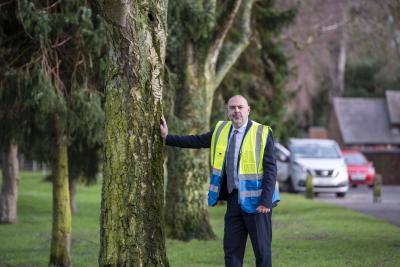The far reaching inspection programme has included all 258,295 trees that fall under the direct care of City of Wolverhampton Council.
It covers a diverse range of species that are located in streets, near public buildings, in cemeteries and at various parks and open spaces throughout the city.
The inspection programme, which has taken 2 years to complete, firstly involved identifying the exact number and location of the trees that fall under the care of the council.
Tree inspectors then assessed each tree to determine its specific management needs. Every tree has undergone a thorough health and safety review and any necessary maintenance has been identified and planned in accordance with the council’s Tree Risk Management policy.
The result is a comprehensive city wide record which will help provide information about any tree under the council’s care.
In addition, the council has also launched an innovative interactive tree inspection map which allows both residents and stakeholders to access real time information on tree locations and inspections.
Councillor Craig Collingswood, cabinet member for environment and climate change, said: “This is a huge achievement which has been made possible by the dedication of our arboriculture team alongside the development of a digital platform to manage the tree inspection programme and ongoing maintenance.
“Thanks to officers’ efforts in inspecting, cataloguing and tailoring strategies for each one of our 258,295 trees, we are ensuring both public safety and the wellbeing of the trees themselves.
“This comprehensive record and new interactive map will now be vital tools to help us with risk management, maintenance and expansion of our tree stock. This is important work that will benefit generations to come.
“Trees play a vital role in our commitment to tackle climate change. They capture carbon, provide a habitat for wildlife, reduce the effects of summer heat and offer a way to limit the risk of flooding.
“Not only are there huge environmental advantages, but there are health and wellbeing benefits too. Getting outside and creating and enjoying green spaces in our neighbourhoods can make a real difference to peoples’ physical and mental wellbeing.”
The council’s arboriculture team responds to more than 1,600 customer enquiries each year about trees.
These include queries about pruning, fallen and damaged trees, diseased and unhealthy trees and requests for planting.
For more information about the council’s tree service visit Trees, hedges and grass.
